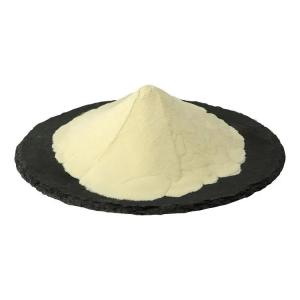News list
News Center
Hot Product
News
Phosphoric acid in the study of nutrient adequacy
Time:2025-10-31
1. Introduction
Phosphoric acid (H₃PO₄) plays an important role in nutritional science, particularly in research on nutrient adequacy and balance. As a source of phosphorus, one of the essential elements for human health, phosphoric acid has become a focus in the evaluation of dietary intake, food composition, and biochemical metabolism. Understanding its role helps researchers assess how modern diets meet the body's phosphorus requirements without exceeding safe levels.
2. Role of Phosphoric Acid in Nutrient Evaluation
In the study of nutrient adequacy, phosphoric acid is often used as a reference compound for determining total phosphorus content in foods and biological samples. Through chemical analysis, researchers can calculate phosphorus availability and absorption efficiency. This information contributes to dietary recommendations and food fortification strategies aimed at maintaining optimal phosphorus status across different populations.
3. Analytical Applications in Food and Biological Research
Phosphoric acid is widely applied in laboratory techniques related to nutrient assessment. It is commonly used as a reagent in spectrophotometric assays, chromatography, and sample digestion processes. These methods help quantify phosphorus-containing compounds such as nucleotides, phospholipids, and minerals, which are crucial indicators of nutrient composition and metabolism in both foods and living organisms.
4. Relationship Between Phosphoric Acid and Dietary Patterns
Studies have shown that phosphoric acid derivatives are present in various food products, particularly in processed foods and beverages. Evaluating their contribution to total phosphorus intake allows scientists to better understand dietary patterns and potential imbalances. Excessive consumption of phosphorus additives may influence nutrient ratios such as calcium-to-phosphorus balance, an important consideration in the overall assessment of diet quality.
5. Implications for Nutritional Policy and Research
By integrating phosphoric acid data into nutrient adequacy studies, researchers and policymakers can refine nutritional guidelines and public health recommendations. Accurate phosphorus assessment supports the establishment of safe intake limits, monitoring of population nutrient status, and improvement of labeling standards for phosphorus-containing food products.
6. Conclusion
Phosphoric acid serves as both a practical analytical tool and a key subject of study in nutrient adequacy research. Its involvement in evaluating phosphorus levels contributes to a deeper understanding of diet composition, nutritional balance, and food formulation. Continued investigation into phosphoric acid’s role will help ensure that nutrient adequacy assessments remain accurate and relevant in the context of modern dietary habits.
Phosphoric acid (H₃PO₄) plays an important role in nutritional science, particularly in research on nutrient adequacy and balance. As a source of phosphorus, one of the essential elements for human health, phosphoric acid has become a focus in the evaluation of dietary intake, food composition, and biochemical metabolism. Understanding its role helps researchers assess how modern diets meet the body's phosphorus requirements without exceeding safe levels.
2. Role of Phosphoric Acid in Nutrient Evaluation
In the study of nutrient adequacy, phosphoric acid is often used as a reference compound for determining total phosphorus content in foods and biological samples. Through chemical analysis, researchers can calculate phosphorus availability and absorption efficiency. This information contributes to dietary recommendations and food fortification strategies aimed at maintaining optimal phosphorus status across different populations.
3. Analytical Applications in Food and Biological Research
Phosphoric acid is widely applied in laboratory techniques related to nutrient assessment. It is commonly used as a reagent in spectrophotometric assays, chromatography, and sample digestion processes. These methods help quantify phosphorus-containing compounds such as nucleotides, phospholipids, and minerals, which are crucial indicators of nutrient composition and metabolism in both foods and living organisms.
4. Relationship Between Phosphoric Acid and Dietary Patterns
Studies have shown that phosphoric acid derivatives are present in various food products, particularly in processed foods and beverages. Evaluating their contribution to total phosphorus intake allows scientists to better understand dietary patterns and potential imbalances. Excessive consumption of phosphorus additives may influence nutrient ratios such as calcium-to-phosphorus balance, an important consideration in the overall assessment of diet quality.
5. Implications for Nutritional Policy and Research
By integrating phosphoric acid data into nutrient adequacy studies, researchers and policymakers can refine nutritional guidelines and public health recommendations. Accurate phosphorus assessment supports the establishment of safe intake limits, monitoring of population nutrient status, and improvement of labeling standards for phosphorus-containing food products.
6. Conclusion
Phosphoric acid serves as both a practical analytical tool and a key subject of study in nutrient adequacy research. Its involvement in evaluating phosphorus levels contributes to a deeper understanding of diet composition, nutritional balance, and food formulation. Continued investigation into phosphoric acid’s role will help ensure that nutrient adequacy assessments remain accurate and relevant in the context of modern dietary habits.


 CN
CN





